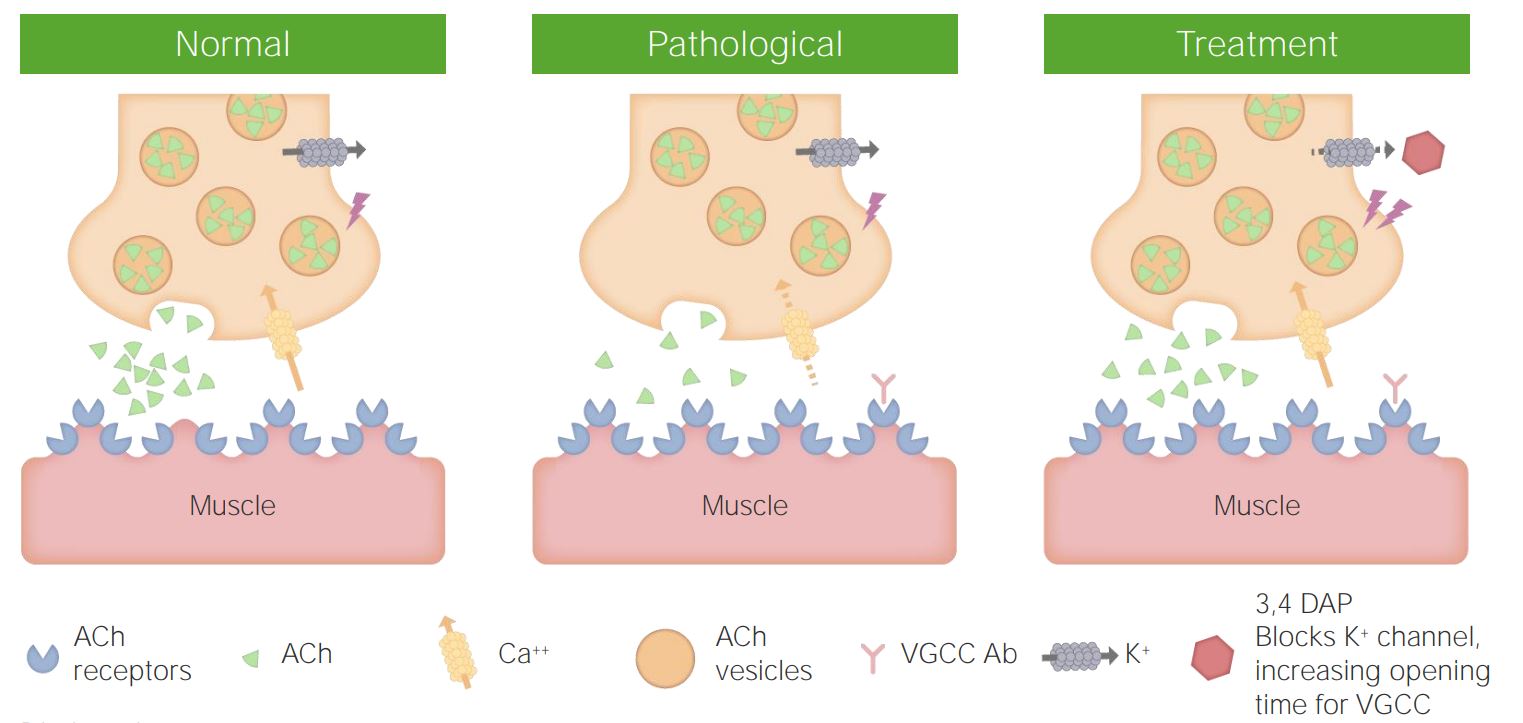Playlist
Show Playlist
Hide Playlist
General Approach to Neuromuscular Junction Disorders
-
Slides Strowd Neuromuscular Junction Disorders.pdf
-
Download Lecture Overview
00:01 In this lecture, we're going to talk about neuromuscular junction disorders. 00:05 A neat group of disorders that are really important to understand for both patients and when answering clinical vignettes. 00:14 As you recall, whenever we're evaluating anyone who presents with some type of neurologic complaint, we break it down. 00:21 And the first thing we have to figure out is whether this is a central nervous system problem, or a peripheral nervous system problem. 00:28 And we use things like the neurologic exam to localize the patient's presentation to the CNS, or the PNS. 00:36 In the peripheral nervous system, there's really three places that we consider for most presentations. 00:41 We want to figure out, could this be coming from the muscle, the neuromuscular junction, and the nerve? And we use our history, in particular our examination, to localize the problems to a specific area of the peripheral nervous system. 00:56 In the neuromuscular junction, we can further subdivide diseases and presentations into those that are presynaptic, occurring at the presynaptic terminus of the neuromuscular junction, or postsynaptic. 01:08 And that's an important way that we walk through problems in the peripheral nervous system. 01:14 So let's think more specifically about the neuromuscular junction. 01:17 How do we localize problems to the neuromuscular junction and focus in on pathology in that area? When we use our neurologic exam, we always perform a comprehensive neurologic exam. 01:29 But when we're worried about a problem at the junction, I want you to think of three things and focus on those three parts of the history and the physical examination. 01:37 We're going to learn that the distribution of the patient's symptoms is key to honing in on the neuromuscular junction and differentiating from muscle or peripheral nerve pathology. 01:48 We're going to look for sensory findings and sensory symptoms and that will be a helpful differentiator between the peripheral nerve and the neuromuscular junction. 01:56 We're also going to focus on reflexes. 01:57 And reflexes are critically important when evaluating these patients. 02:01 For neuromuscular junction diseases, as you'll see, there's a characteristic distribution. 02:07 Patients can have proximal weakness or distal weakness. 02:10 But the key finding, the key distribution is we see bulbar symptoms. 02:15 Patients have ptosis, diplopia, dysarthria, dysphasia, or some combination of those. 02:20 And you'll see in the image on the right, this patient with right sided ptosis and the presence of bulbar findings is critical for localizing a problem to the neuromuscular junction, and in particular differentiating from muscle disease. 02:34 For junctional disorders, we typically see that sensory findings are absent. 02:38 Patients don't have paraesthesias. 02:41 There's not numbness, or paraesthesia, or tingling, or those sorts of symptoms, and we don't find those on exam. 02:49 Our reflex examination often reveals normal reflexes or slightly reduced reflexes. 02:55 Importantly, we don't tend to see absent reflexes with most neuromuscular junction disorders. 03:01 And then with each of these peripheral nervous system localizations there's a wildcard some neat important other criteria that can help focus in, and hone in on a problem in this area. 03:13 And for the neuromuscular junction, we think about fatigable weakness. 03:17 Presence of symptoms that get worse through the day, or worse with prolonged activity, that fatigability of symptoms is going to point us in the direction of the neuromuscular junction. 03:28 So let's take a look at the junction and see what we're talking about. 03:32 This is the connection between the nerve and the muscle, where electrical signals and an action potential are converted to chemical signals in the synaptic cleft. 03:40 And when we're localizing this conditions in this area, we think of the presynaptic problems, and the postsynaptic problems. 03:47 Some of those that we'll learn about, we'll learn about botulism. 03:51 This is a presynaptic disorder that affects the neuromuscular junction and presents with junctional weakness. 03:57 Lambert-Eaton myasthenic syndrome is also a presynaptic disorder affecting the calcium channels on the presynaptic terminus. 04:06 In the postsynaptic area, we think of myasthenia gravis. 04:09 And this is a critical disorder. 04:10 One of the most common neuromuscular junction conditions and it affects the postsynaptic terminus.
About the Lecture
The lecture General Approach to Neuromuscular Junction Disorders by Roy Strowd, MD is from the course Disorders of the Neuromuscular Junctions.
Included Quiz Questions
Which of the following is not a characteristic finding in a disorder of the neuromuscular junction (NMJ)?
- Marked paresthesias
- The distribution includes bulbar findings.
- Normal or decreased reflexes
- Absence of sensory findings
- Fatigability
Which of the following statements is false?
- Botulism is a postsynaptic disorder of the NMJ.
- Myasthenia gravis is a postsynaptic disorder of the NMJ.
- Lambert-Eaton myasthenic syndrome is a presynaptic disorder of the NMJ.
- Myasthenia gravis is the most common NMJ disorder.
- Diplopia is a characteristic symptom of botulism.
Customer reviews
5,0 of 5 stars
| 5 Stars |
|
1 |
| 4 Stars |
|
0 |
| 3 Stars |
|
0 |
| 2 Stars |
|
0 |
| 1 Star |
|
0 |
brilliant introduction to NMJ. I am studying for MRCP exam and this helped me a lot.






